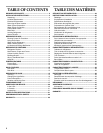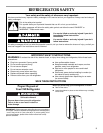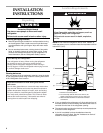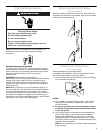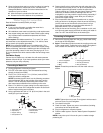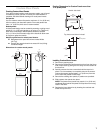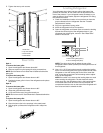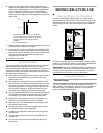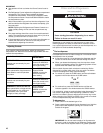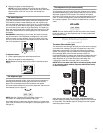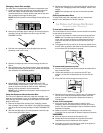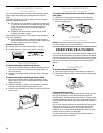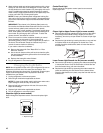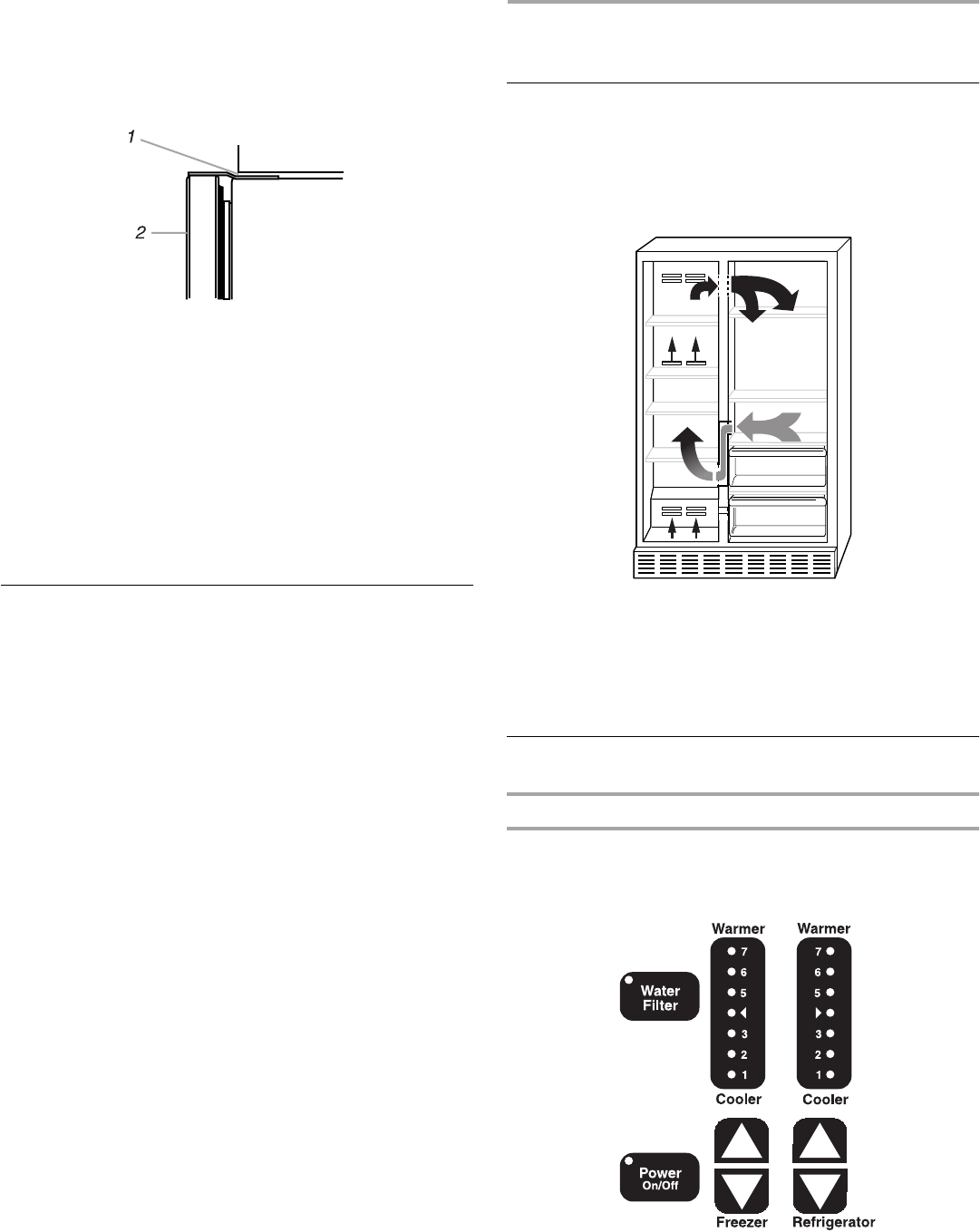
9
6. Adjust the front leveling bolt to bring the refrigerator top
parallel with the cabinet above the refrigerator. For standard
cabinets, leave approximately ¹⁄₈ in. (3.18 mm) gap between
the top hinges and the cabinet. For full-overlay cabinets,
leave ¹⁄₄ in. (6.35 mm) gap for leveling. If you do not have a
cabinet above the refrigerator, simply adjust the refrigerator to
make it level.
7. Adjust the rear leveling bolt to bring the refrigerator level with
the side cabinets or cabinet end panels.
8. If you want, you may now use the four leveling bolts to raise
the refrigerator to close the gap between the refrigerator top
hinge and the cabinet opening. Check that all four rollers still
touch the floor and that the cabinet doors above the
refrigerator open all the way.
9. Replace the base grille.
Normal Sounds
Your new refrigerator may make sounds that your old one didn’t
make. Because the sounds are new to you, you might be
concerned about them. Most of the new sounds are normal. Hard
surfaces, such as the floor, walls, and cabinets, can make the
sounds seem louder. The following describes the kinds of sounds
and what may be making them.
■ If your product is equipped with an ice maker, you will hear a
buzzing sound when the water valve opens to fill the ice
maker for each cycle.
■ Your refrigerator is designed to run more efficiently to keep
your food items at the desired temperatures and to minimize
energy usage. The high efficiency compressor and fans may
cause your refrigerator to run longer than your old one. You
may also hear a pulsating or high-pitched sound from the
compressor or fans adjusting to optimize performance.
■ You may hear the evaporator fan motor circulating air through
the refrigerator and freezer compartments. The fan speed
may increase as you open the doors or add warm food.
■ Rattling noises may come from the flow of refrigerant, the
water line, or items stored on top of the refrigerator.
■ Water dripping on the defrost heater during a defrost cycle
may cause a sizzling sound.
■ As each cycle ends, you may hear a gurgling sound due to
the refrigerant flowing in your refrigerator.
■ Contraction and expansion of the inside walls may cause a
popping noise.
■ You may hear air being forced over the condenser by the
condenser fan.
■ You may hear water running into the drain pan during the
defrost cycle.
REFRIGERATOR USE
Ensuring Proper Air Circulation
In order to ensure proper temperatures, you need to permit
airflow between the two sections. Cold air enters the bottom of
the freezer section and moves up. It then enters the refrigerator
section through the top vent. Air then returns to the freezer as
shown.
Do not block any of these vents with food such as soda, cereal,
bread, etc. If the vents are blocked, airflow will be prevented and
the temperature controls will not function properly.
IMPORTANT: Because air circulates between both sections, any
odors formed in one section will transfer to the other. You must
thoroughly clean both sections to eliminate odors. To prevent
odor transfer from food, wrap or cover foods tightly.
Using the Controls
Electronic Controls
For your convenience, your controls are preset at the factory.
When installing your refrigerator, make sure that the controls are
still preset to the “mid-settings” as shown. To view settings,
press the POWER ON/OFF button.
1. For standard cabinets, leave
¹⁄₈
in. (3.18 mm)
minimum clearance for leveling the refrigerator.
For full-overlay cabinets, leave
¹⁄₄
in. (6.35 mm)
minimum clearance for leveling and door
clearance.
2. Front of the refrigerator.




